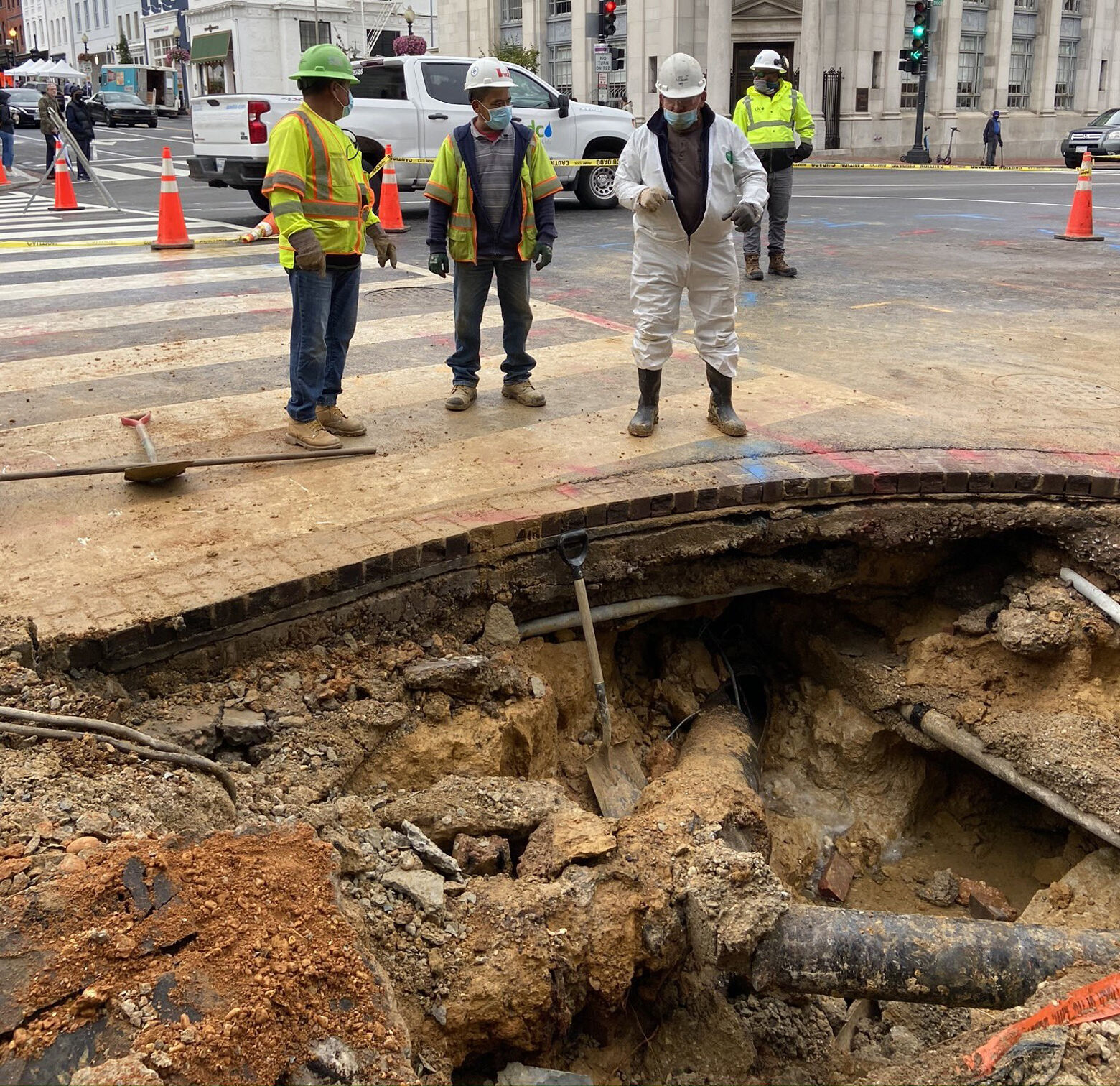
Water main breaks begin to spike in winter months — in an average year about 1,800 of the Washington Suburban Sanitary Commission’s pipes break. Most instances are in the months of November, December, January, and February.
When a break causes a geyser of water to start shooting through the air, believe it or not that can make life easy. Crews know where the break is. But that isn’t how it always works.
When there’s no geyser to indicate where the break is, the commission’s employees have to start digging little holes into the ground.
A leak detection system is used; little censors are put along the pipe, and how close the censor is to the leak is determines how loud the whirring sound is that emanates through a pair of headphones.
It can sound almost like a whirring wind. That alone can take a while to determine. Then crews have to start digging and hoping for the best when they find the break.
Pipes tend to lay either four feet or between six and seven feet in the ground. When they break, crews are hoping to find a circle break.
A circle break is basically a small crack that runs around the pipe like a ring and can be clamped back closed pretty fast. If there’s more of a gash where a hole burst out, known as a “split break,” that can take a lot longer to repair.
“A split break we have to go end to end, so we might have to do 18 feet of pipe or seven feet of pipe,” explained Kennard Wheeler, a division manager at WSSC.
Crews will cut all that pipe out and replace it. “Then we have to block it up. Then we also got to make sure our joints don’t leak once we put it back together.”
If the valves feeding the water into that broken pipe are broken, they have to be replaced too, which will drag the process out even longer.
If it’s under a road, that road needs to get repaired again. It can be a long and meticulous process.
“We have to put down crushed run and we have to tamp it every 36 inches to makes sure the compaction is good,” said Wheeler. Once the asphalt is patched up, a contractor will come in two weeks later to make the repairs more permanent.
“We want to make sure it’s not leaking, and we want to make sure we don’t have a lot of calls saying we’ve got dips in the road,” he explained.
Best case scenario, under the best conditions in terms of what kind of leak it is, where it is, and much digging has to be done, it can all be done in a few hours.
But if Miss Utility is slow to arrive, so crews know where not to dig, or other circumstances that are less than ideal, it might take a lot longer.
“Be patient, be patient with us,” said Wheeler. “We’re here to work. We get to them as fast as we can to make the repairs.”
Like WTOP on Facebook and follow @WTOP on Twitter to engage in conversation about this article and others.
Get breaking news and daily headlines delivered to your email inbox by signing up here.
© 2021 WTOP. All Rights Reserved. This website is not intended for users located within the European Economic Area.
"easy" - Google News
November 13, 2021 at 11:14PM
https://ift.tt/3cfjxrD
Finding that broken water main isn’t easy. Neither is fixing it. - WTOP
"easy" - Google News
https://ift.tt/38z63U6
Shoes Man Tutorial
Pos News Update
Meme Update
Korean Entertainment News
Japan News Update
Bagikan Berita Ini














0 Response to "Finding that broken water main isn’t easy. Neither is fixing it. - WTOP"
Post a Comment